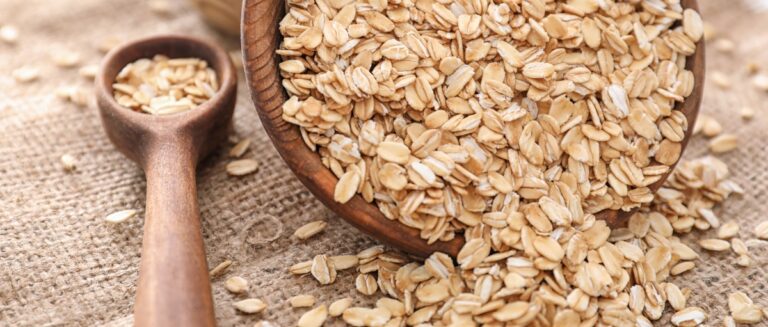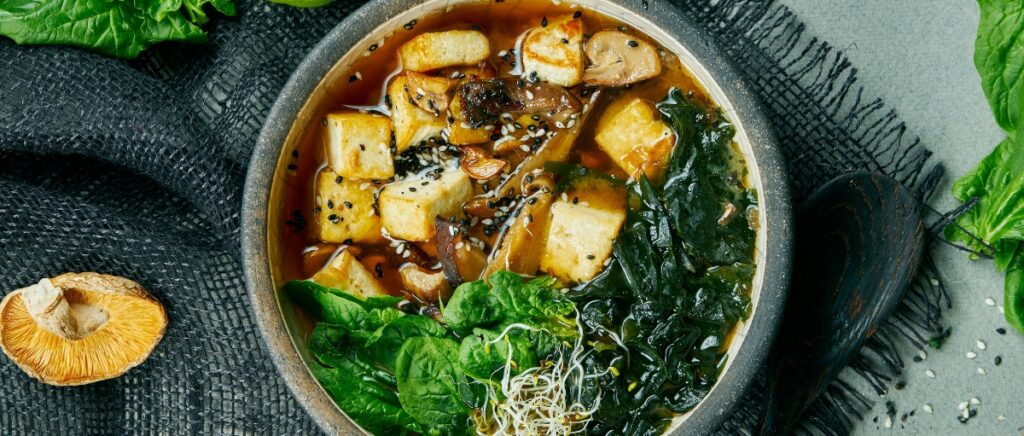What if there were places where people commonly lived healthy, active lives to age 100 and beyond? Imagine having 12 times the odds of reaching 100 than the average American.
Such spots exist: they’re called Blue Zones.
From Okinawa, Japan, to Ikaria, Greece, to Loma Linda, California, the world’s longest-lived people share one key thing: a whole-food diet emphasizing plant foods. While genetics play a role, experts believe diet is the most powerful longevity factor within our control.
Discover the dietary secrets of people in the blue zones and learn how to incorporate their healthy eating habits into your own kitchen. This article explores authentic recipes and ingredients that contribute to their extraordinary lifespans. You will find easy and delicious ways to embrace the diets of an Okinawan centenarian, a Sardinian shepherd, or an Adventist vegetarian—no plane ticket required.
Get ready to dig into a treasure trove of longevity wisdom gleaned from the world’s healthiest people. Your telomeres will thank you!
What Makes a Blue Zone Diet Special
The Blue Zone Diet is very similar to the Mediterranean diet. While the specifics vary among regions, all blue zone diets share a few key characteristics. Dan Buettner, the man behind the Blue Zone Diet, explains that these meals are primarily composed of plant-based foods, especially:
- Leafy greens like spinach, kale, and chard
- Root vegetables like sweet potatoes and turnips
- Whole grains like oats, barley, and brown rice
- Legumes of all kinds—beans, lentils, peas, chickpeas
- Nuts, especially almonds, walnuts, and pistachios
- Fruits like berries, melons, and stone fruits
Meat is eaten sparingly, though there’s evidence to say that those who are actually living past 100 in these areas eat meat regularly.
Processed foods with added sugars and refined carbs are rare, if eaten at all.
Instead, Blue Zone cuisine features simple preparations that let the natural flavors of high-quality ingredients shine through. You won’t find complex sauces or fancy techniques—just honest, humble food that’s stood the test of time.
The Wisdom of When and How You Eat
What you eat is only part of the Blue Zone equation. Equally important is how you eat. Blue Zone residents don’t overthink it, but they naturally follow a few powerful principles:
- Hara hachi bu: This Okinawan saying roughly translates to “eat until you’re 80% full.” Blue zoners avoid overeating by stopping when they feel slightly satisfied but not stuffed.
- Front-loading calories: The biggest meal of the day is often lunch, not dinner. This gives the body more time to digest food before sleep.
- Eating on a schedule: Residents maintain a consistent eating window, often going 12-16 hours overnight without food. This natural intermittent fasting may help regulate blood sugar, weight, and inflammation.
- Viewing mealtime as sacred: Eating is a ritual to be savored slowly with loved ones, not a task to rush through alone. The social connections forged at the table are just as nourishing as the food.
Recipes from Okinawa, Japan
Okinawan cuisine is rich in soy foods, bitter melon, seaweed, and colorful vegetables. A few staples:
- Goya Champuru: This stir-fry features bitter melon, tofu, eggs, and pork for a satisfying blend of flavors. Bitter melon is prized for its medicinal properties and is a great source of vitamin C.
- Miso Soup: A simple broth of fermented soybean paste, seaweed, and chunks of local vegetables like sweet potato or daikon. The probiotics in miso support gut health.
Recipes from Ikaria, Greece
The rocky island of Ikaria is known for its savory pies, native greens, and tart goat’s milk. Try:
- Ikarian Longevity Stew: Tender black-eyed peas simmered with tomatoes, garlic, and parsley in this satisfying one-pot meal. Beans are the #1 longevity food, and this stew delivers plenty.
- Horta Pie: Wild greens like dandelion, chard, and purslane are wrapped in phyllo and baked into a pie. This is a great way to get your greens, which may have 10 times the antioxidants of red wine.
Recipes from Sardinia, Italy
Sardinian fare is rustic and rugged, befitting an island of shepherds and farmers. Look for:
- Minestrone Soup: This hearty soup is packed with beans, vegetables, and fregola, a toasted pebble-sized pasta unique to Sardinia. The combo of beans and greens boosts glutathione, the “master antioxidant.”
- Whole Grain Sourdough Bread: Sardinians and Ikarians craft dense, chewy loaves using a special yeast that helps the bread stay fresh for a week. Sourdough is more digestible and contains immune-supporting phytonutrients.
Recipes from Nicoya, Costa Rica
The Nicoyan peninsula is known for its tropical produce and a steadfast reliance on traditional foods like beans, corn, and squash. Savor the essence of Costa Rica with:
- Gallo Pinto: This savory breakfast dish of black beans and rice seasoned with onions, peppers, and cilantro provides plenty of protein and fiber to fuel your morning. Traditionally served with corn tortillas.
- Picadillo: A hearty hash of vegetables like chayote, squash, and potatoes that makes a warming and nourishing bowl. The squash helps regulate blood sugar.
Recipes from Loma Linda, California
The Seventh Day Adventists of Loma Linda prize whole plant foods and often avoid meat entirely. Their Mediterranean-inspired bowls and casseroles include:
- Veggie Breakfast Burrito: Scrambled eggs, beans, avocado, and pico de gallo are tucked into a whole-grain tortilla for a filling, portable breakfast that will keep you going all morning.
- Three Sisters Soup: Beans, squash, and corn unite in this Native American-inspired soup that’s both deeply comforting and packed with nutrients. Bonus points for homemade veggie broth!
Tips for Eating Like a Centenarian
Adopting a blue-zone diet doesn’t have to mean a total overhaul. Start with a few simple swaps and build from there:
- Embrace beans: Aim to eat a cup daily in soups, stews, dips, or as a side. They’re cheap, versatile, and full of fiber and plant protein.
- Pile on the veggies: Build blue zone meals around seasonal produce and use meat as more of a garnish. Start with a veggie-based soup or a big salad.
- Go whole grain: Choose brown rice, whole wheat bread, and ancient grains like quinoa instead of refined versions. They’ll keep you full longer.
- Make plants the star: Challenge yourself to one meat-free day a week, then build up to more. Get inspired by cuisines that excel at plant-based cooking, like Indian or Ethiopian.
Common Questions and Concerns About Blue Zone Recipes
What if I can’t find some of these ingredients?
Shop the perimeter of your grocery store, and you’ll find most of what you need for a blue zone pantry. Swap specialty items for what’s available—butternut squash for chayote, kale for dandelion greens.
Will my family really eat this way?
Start with familiar and comforting recipes, like hearty minestrone soup or a veggie-packed frittata. Serve new dishes alongside old favorites, and let everyone build their own bowls and wraps.
How can I dine out and still eat like a centenarian?
Focus on veggie sides, bean-based dishes, and whole grains like brown rice. Choose olive oil and lemon over heavy sauces. And don’t feel like you have to be perfect—even small changes matter.
Here’s to Your Health!
The world’s longest-lived people haven’t uncovered some magic supplement or invested in pricey superfoods. Their secret is quite simple and accessible to us all: a whole-food, plant-based diet that emphasizes local, seasonal ingredients prepared with love.
As we’ve seen, whether in the mountains of Sardinia or the hills of California, the path to longevity is paved with beans, greens, grains, and an active lifestyle that keeps you young at heart. So take a page from the Blue Zone playbook and start savoring these centenarian-approved dishes.
Pick one recipe to try this week and share it with someone you love. Raise a glass of Sardinian Cannonau wine to your health. And remember—it’s never too late (or early) to start eating for a long, vibrant life ahead.
Sources
Nature. (2023). Dietary patterns in longevity: A comprehensive review. Nature Food, 4, 893-906. https://www.nature.com/articles/s43016-023-00868-w
Buettner, D. (2023). Blue Zones: Secrets to living longer. Dan Buettner Official Website. https://danbuettner.com/
Rogers, D. (2023). Avoiding meat to live longer? A breakdown of the Blue Zones. Sustainable Dish. https://sustainabledish.com/avoiding-meat-to-live-longer-a-breakdown-of-the-blue-zones/











